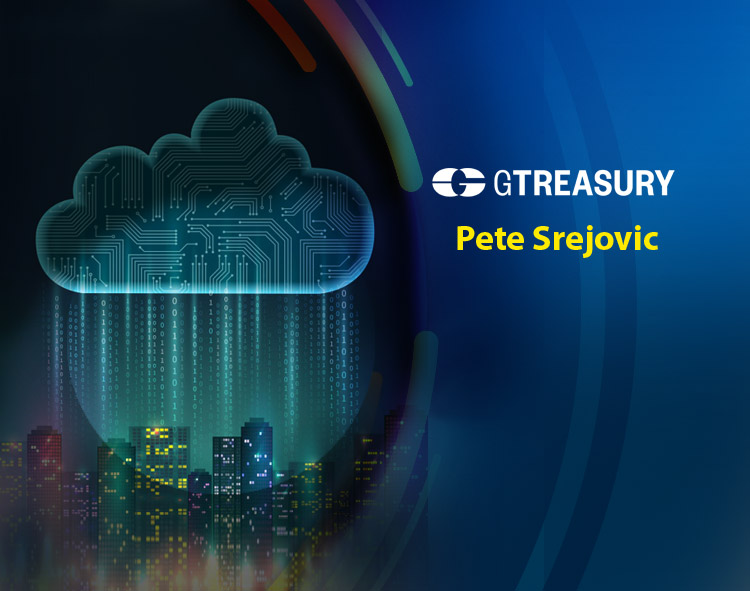The ever-increasing complexities and constant state of change all too familiar to corporate treasurers call for not just new tools and technologies, but far greater connectivity between them all. To achieve more efficient harmony across their full technology stack, corporate treasury departments should future-proof around a digital backbone – one that consists of a treasury management system (TMS), ERP, or similar technology, or even component solutions working in combination.
Corporates are feeling the forces of change both externally and internally. Externally, the second Payment Services Directive (PSD2) and drive toward standardizing data access through API-backed open banking are rapidly transforming how corporates interact with financial information. Internally, many are increasingly pursuing open treasury – a concept in which connected technologies can complete tasks more automatically. As both payment volumes and complexity accelerate, corporates are recognizing the need for greater efficiency in order to keep pace with demands and remain competitive.
Read More: Celsius Network and Prime Trust partner to secure depositors funds and offer low-cost credit
Introducing a digital backbone is the next stage in implementing open treasury. In the aftermath of digital transformations to first get to the cloud, many treasury departments now have numerous disjointed cloud systems that don’t communicate with each other. In contrast, a digital backbone makes the tools that corporates rely upon interoperable. The strategy provides corporates currently facing challenging manual processes and data siloed across multiple systems with a way of marshalling open, integrated technologies to achieve seamless functionality and significantly more productive user experiences.
Read More: Asia’s First Compliant Crypto Fund Has Emerged — Circle Fund
Here are five challenges that a digital backbone strategy enables corporate treasurers to overcome:
1) Rigid and slow technological change.
With industry standards, technologies, and other key variables always in flux, many – if not most – treasury departments struggle to find the flexibility necessary to adopt new tools and methods they know they need. Enabling this flexibility is perhaps the biggest benefit of a digital backbone strategy. With a digital backbone, corporates can swap in open and compatible technologies with newfound agility. This flexibility extends to all areas of responsibility under the treasury department’s purview, enabling treasurers to quickly implement tools as needed and eliminating growth-hindering obstacles.
2) Data without insights.
Treasury departments face a crucial challenge centralizing and analyzing the data they require to glean key insights and produce accurate forecasts that dictate company action. Myriad factors, from the rise of big data to rapidly increasing data complexity and security concerns, all contribute to the difficulty of achieving actionable insights. A digital backbone strategy alleviates these impediments by delivering simpler and more complete visibility into data, a more capable handling of big data, and a removal of data integration obstacles that make meaningful insights that much easier to come by.
3) Cloudy visibility within complex ecosystems.
As corporate acquisitions and international expansions add complexity to treasury processes by combining disparate systems, risk and exposure naturally follow. Managing this risk calls for immediate, accurate, and total visibility to pinpoint the exact windows of vulnerability within increasingly-vast treasury operations. For corporates attempting to achieve this visibility while working with numerous mismatched systems, the task is extraordinarily difficult – if not downright impossible. A digital backbone solves this challenge by providing the accurate and immediate visibility required, integrating data sources and providing more readily available access to that information.
4) Inefficient workflow.
Treasury departments feel relentless competitive pressure to increase their own standards of excellence and deliver against ever greater efficiency goals. This drive is essential not just within the confines of the treasury department but across the entire business: the success of objectives across other departments often depends on treasury delivering required information on a deadline.
Achieving transformative gains in efficiency is arguably the best reason to turn to a digital backbone strategy. With disjointed technology stacks, assembling vital financial information from various systems quickly requires an all-hands-on-deck approach – comprising numerous treasury staff enlisted for manual efforts. With a digital backbone, the work of organizing that information can instead be performed by the technology itself, freeing treasury staff to instead pursue higher-level tasks worthier of their time and skills. When considering a digital backbone, the efficiency delivered to corporates by the user experience alone should be enough to justify adoption.
5) Unnecessary fraud vulnerability.
Security breaches and fraud thrives where treasury processes are hampered by tremendous complexity – making oversight of disperse components and effective internal controls difficult to consistently enforce. Where processes include numerous handoff points, and where corporates are tempted to take shortcuts to escape complexity, fraud finds a foothold. A digital backbone strategy enables strict controls and fraud-reducing practices by streamlining handoff points, and maintaining direct control over the systems governing procedures at those transitions to ensure proper and secure conduct.
Economic and strategic benefits
In addition to addressing the five challenges above, implementing a digital backbone enables a technology stack that operates on an economic model far different from legacy infrastructures. Whereas disconnected SaaS components are obsoleting technologies in the long term, a digital backbone strategy can appreciate in value because it offers an architecture for adopting emerging technologies as they arrive. From a strategic and a pure cost-of-ownership viewpoint, a treasury department that successfully implements a digital backbone to establish and maintain connectivity among all components can avoid the time and resource investments and technological hang-ups that come with adopting new tools. In this way, a digital backbone both solves current challenges and paves a glide path for more easily responding to future challenges.
